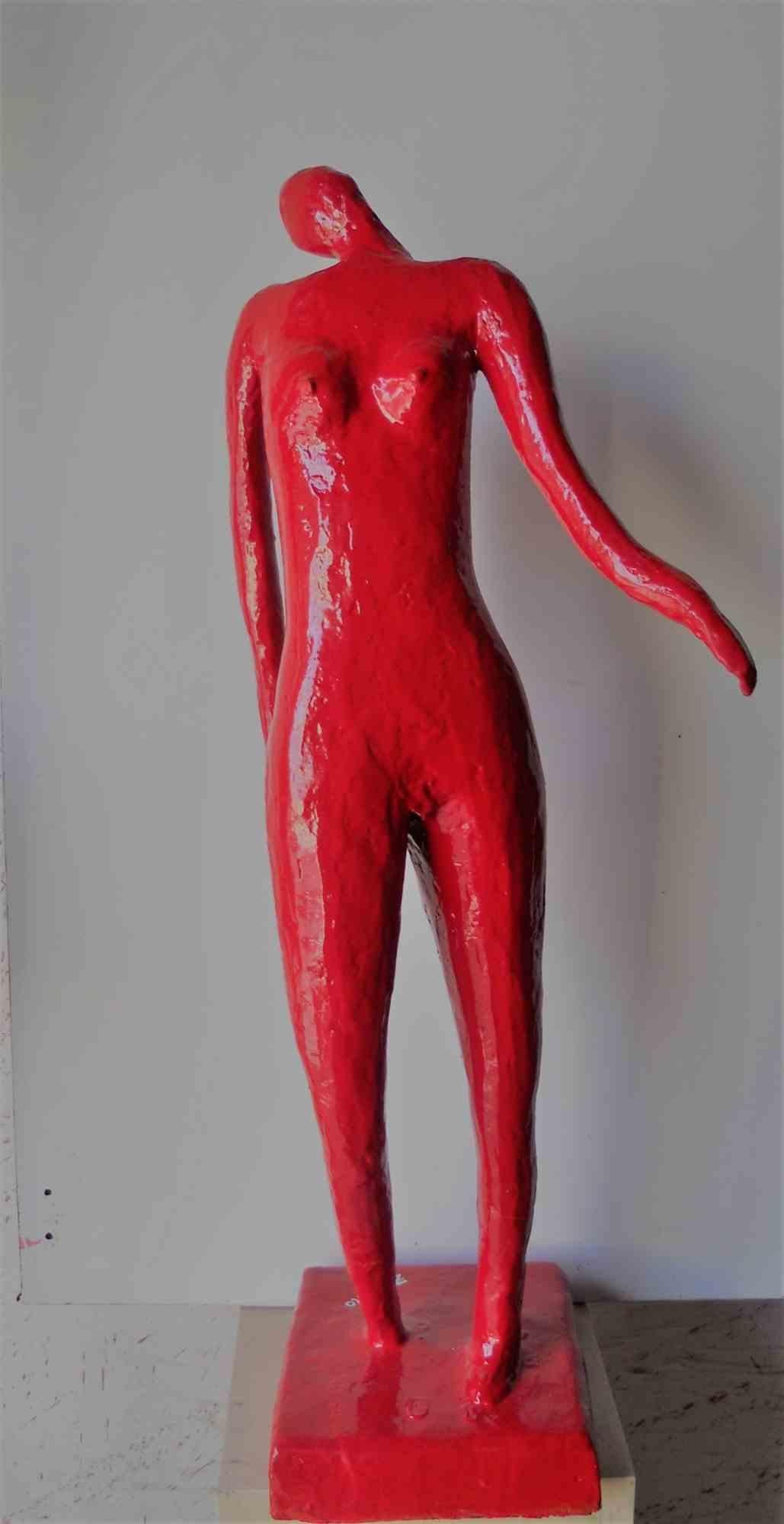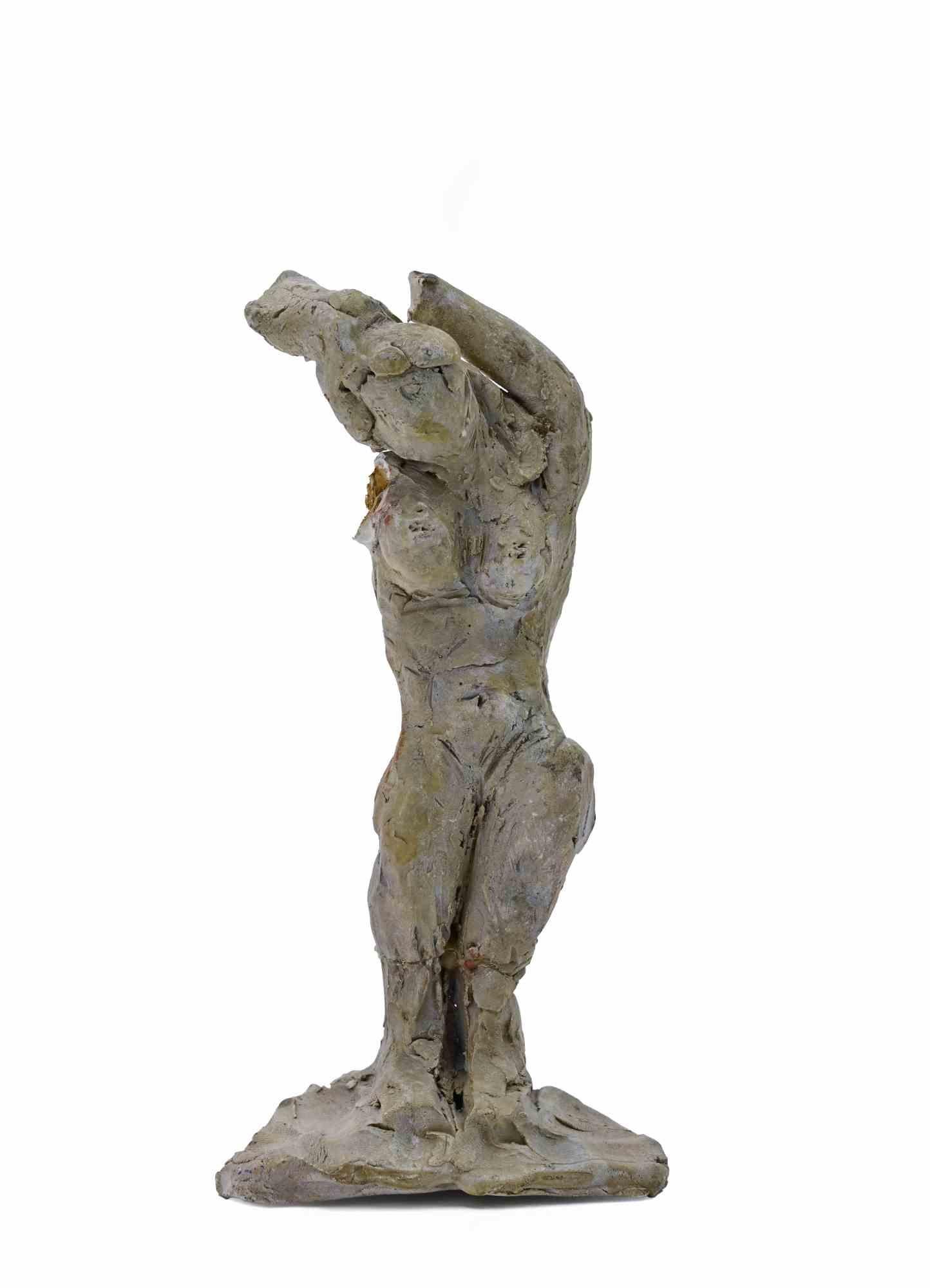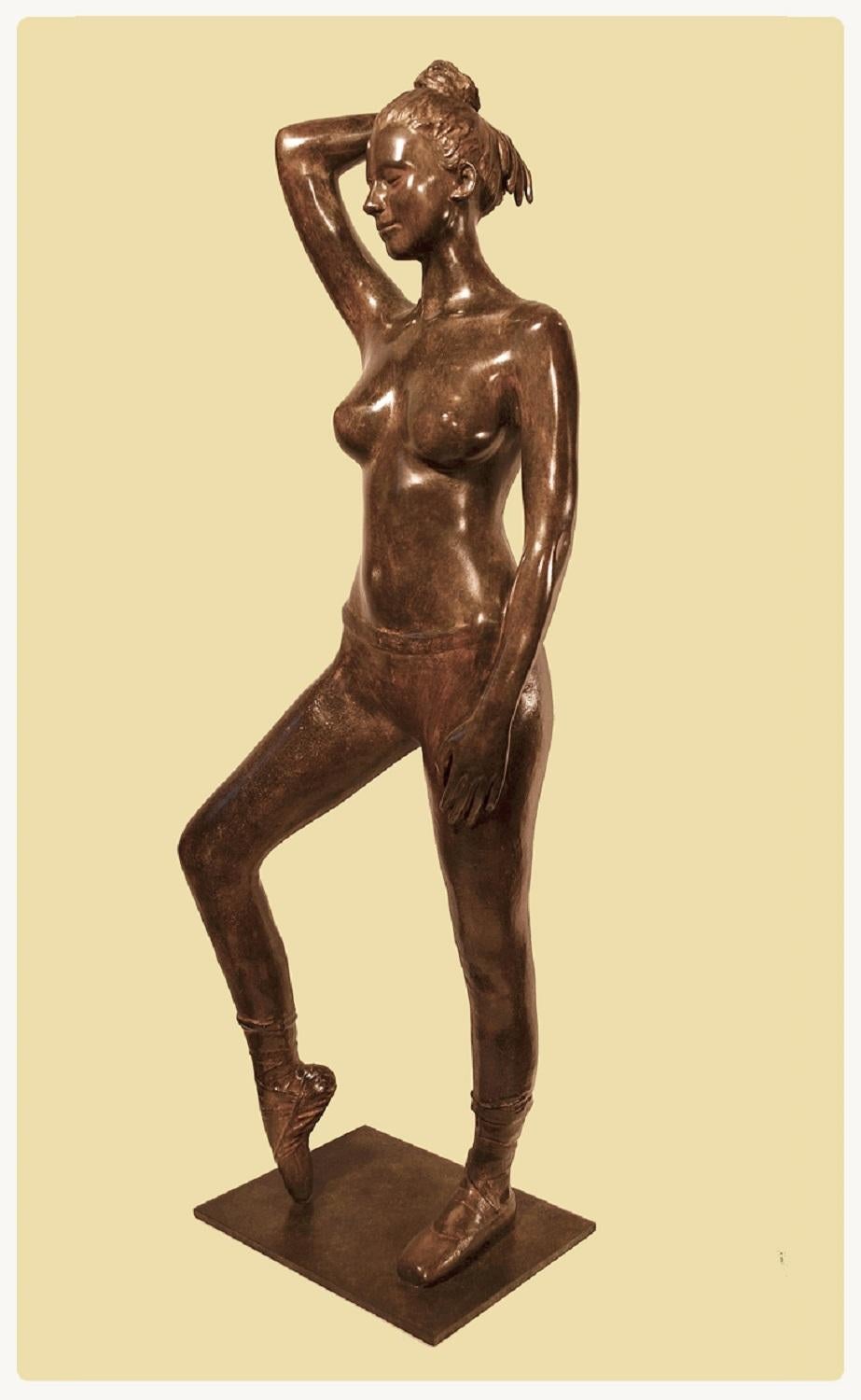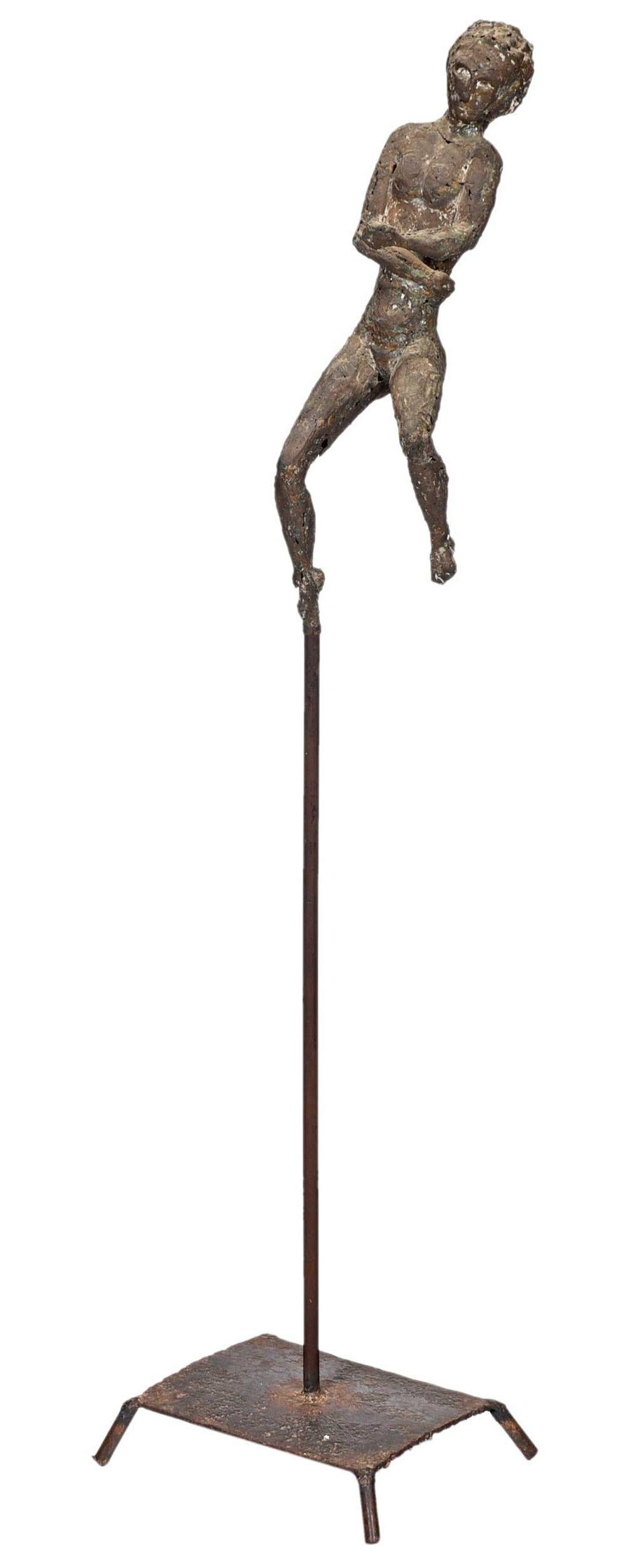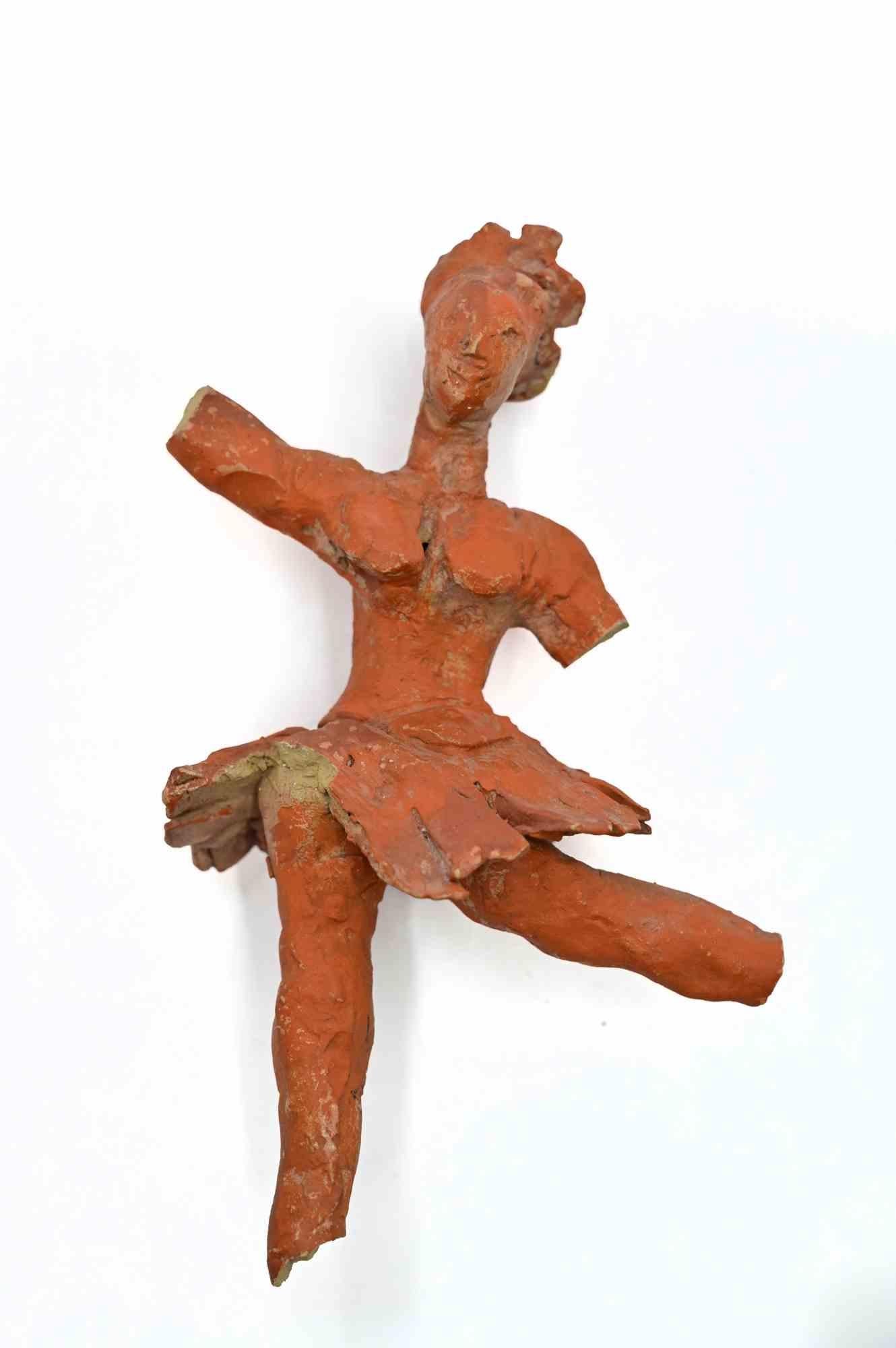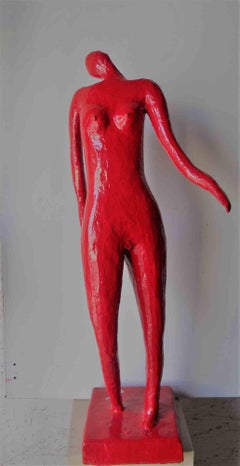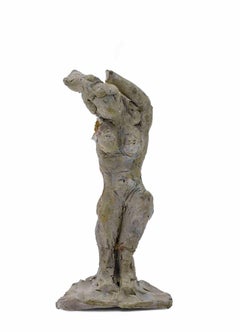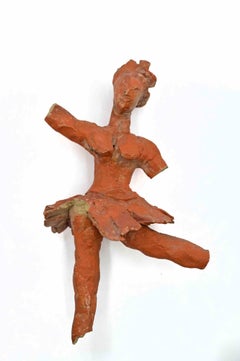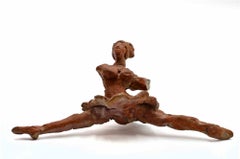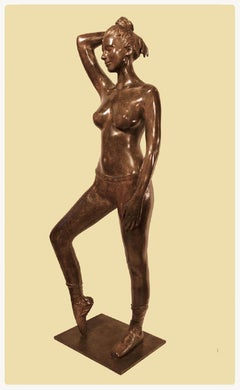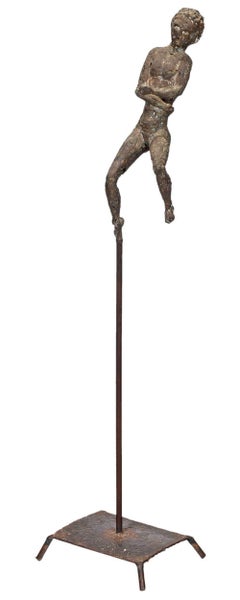Items Similar to The Dancer - Sculpture by Giacomo Manzù - 1957
Want more images or videos?
Request additional images or videos from the seller
1 of 2
Giacomo ManzúThe Dancer - Sculpture by Giacomo Manzù - 19571957
1957
$289,004.72
£213,827.36
€240,000
CA$399,600.46
A$438,711.47
CHF 228,876.71
MX$5,309,019.54
NOK 2,868,614.29
SEK 2,702,988.86
DKK 1,827,366.71
About the Item
The Dancer is a sculpture realized by Giacomo Manzù in 1957. Unique piece.
Exhibitions:
Manzù. L’Uomo e l’Artista, Palazzo Venezia, Roma 2002-2003
Manzù-Marino. Gli ultimi moderni, Fondazione Magnani Rocca, Parma 2014
Bibliography:
AA.VV, Omaggio a Manzù , Edizioni Graphis Arte, Livorno 1984, p. 39
Manzù. L’Uomo e l’Artista , catalogue of the exhibition by C. Strinati, Palazzo Venezia, Roma 2002, p. 160, n.86
Manzù-Marino. Gli ultimi moderni, catalogue of the exhibition by L. D’Angelo, S. Roffi, Fondazione Magnani Rocca, Parma 2014, p. 128
The sculpture has the certificate of autenticity by Inge Manzù, the artist's wife.
It is in perfect condition.
- Creator:Giacomo Manzú (1908 - 1991, Italian)
- Creation Year:1957
- Dimensions:Height: 5.71 in (14.5 cm)Width: 5.71 in (14.5 cm)Depth: 35.44 in (90 cm)
- Medium:
- Movement & Style:
- Period:
- Condition:Insurance may be requested by customers as additional service, contact us for more information.
- Gallery Location:Roma, IT
- Reference Number:Seller: J-681721stDibs: LU650315548282
About the Seller
4.9
Platinum Seller
Premium sellers with a 4.7+ rating and 24-hour response times
1stDibs seller since 2017
7,709 sales on 1stDibs
Typical response time: 2 hours
- ShippingRetrieving quote...Shipping from: Roma, Italy
- Return Policy
Authenticity Guarantee
In the unlikely event there’s an issue with an item’s authenticity, contact us within 1 year for a full refund. DetailsMoney-Back Guarantee
If your item is not as described, is damaged in transit, or does not arrive, contact us within 7 days for a full refund. Details24-Hour Cancellation
You have a 24-hour grace period in which to reconsider your purchase, with no questions asked.Vetted Professional Sellers
Our world-class sellers must adhere to strict standards for service and quality, maintaining the integrity of our listings.Price-Match Guarantee
If you find that a seller listed the same item for a lower price elsewhere, we’ll match it.Trusted Global Delivery
Our best-in-class carrier network provides specialized shipping options worldwide, including custom delivery.More From This Seller
View AllThe Dancer - Sculpture by Giuseppe Zumbolo - 2014
Located in Roma, IT
A unique piece from 2014, in excellent condition, with artist's certificate of authenticity.
The sculpture is created like this: internal iron structure, carved and shaped with ceme...
Category
2010s Contemporary Figurative Sculptures
Materials
Iron
Woman - Sculpture by Sirio Pellegrini - 1960s
Located in Roma, IT
Painted Terracotta sculpture realized by Sirio Pellegrini in 1960s.
Good condition.
Sirio Pellegrini, born in Rome on March 1, 1922, of Abruzzo origins (Capestrano), spent his chil...
Category
1960s Modern Figurative Sculptures
Materials
Ceramic
Ballerina - Sculpture by Sirio Pellegrini - 1960s
Located in Roma, IT
Painted Terracotta sculture realized by Sirio Pellegrini in 1960s.
Good condition.
Sirio Pellegrini, born in Rome on March 1, 1922, of Abruzzo origins (Capestrano), spent his child...
Category
1960s Modern Figurative Sculptures
Materials
Terracotta
Ballerina - Sculpture by Sirio Pellegrini - 1960s
Located in Roma, IT
Painted Terracotta sculpture realized by Sirio Pellegrini in 1960s.
Good condition.
Sirio Pellegrini, born in Rome on March 1, 1922, of Abruzzo origins (Capestrano), spent his chil...
Category
1960s Modern Figurative Sculptures
Materials
Terracotta
Figure - Sculpture by Sirio Pellegrini - 1960s
Located in Roma, IT
Painted Terracotta sculpture realized by Sirio Pellegrini in 1960s.
Good condition.
Sirio Pellegrini, born in Rome on March 1, 1922, of Abruzzo origins (Capestrano), spent his chil...
Category
1960s Modern Figurative Sculptures
Materials
Stone
Passo di Danza - Bronze Sculpture by Giuseppe Mazzullo - 1946
Located in Roma, IT
Bronze sculpture with wooden base. Signed and dated under the base.
Certificate of authenticity signed by the artist,
Category
1940s Modern Nude Sculptures
Materials
Bronze
You May Also Like
Poiting Dancer by Patrick Brun
By Patrick Brun
Located in Pasadena, CA
Patrick BRUN was born in Paris in 1941. After obtaining his Engineering degree, he began his professional life as a teacher in mathematics and physics. After this period, he started ...
Category
21st Century and Contemporary Contemporary Figurative Sculptures
Materials
Bronze
$4,800 Sale Price
33% Off
"Dancer" David Hare, Male Nude, Figurative Sculpture, Mid-Century Surrealist
By David Hare
Located in New York, NY
David Hare
Dancer, circa 1955
Bronze with integral stand
68 high x 17 wide x 13 1/2 deep inches
“Freedom is what we want,” David Hare boldly stated in 1965, but then he added the caveat, “and what we are most afraid of.” No one could accuse David Hare of possessing such fear. Blithely unconcerned with the critics’ judgments, Hare flitted through most of the major art developments of the mid-twentieth century in the United States. He changed mediums several times; just when his fame as a sculptor had reached its apogee about 1960, he switched over to painting. Yet he remained attached to surrealism long after it had fallen out of official favor. “I can’t change what I do in order to fit what would make me popular,” he said. “Not because of moral reasons, but just because I can’t do it; I’m not interested in it.”
Hare was born in New York City in 1917; his family was both wealthy and familiar with the world of modern art. Meredith (1870-1932), his father, was a prominent corporate attorney. His mother, Elizabeth Sage Goodwin (1878-1948) was an art collector, a financial backer of the 1913 Armory Show, and a friend of artists such as Constantin Brancusi, Walt Kuhn, and Marcel Duchamp.
In the 1920s, the entire family moved to Santa Fe, New Mexico and later to Colorado Springs, in the hope that the change in altitude and climate would help to heal Meredith’s tuberculosis. In Colorado Springs, Elizabeth founded the Fountain Valley School where David attended high school after his father died in 1932. In the western United States, Hare developed a fascination for kachina dolls and other aspects of Native American culture that would become a recurring source of inspiration in his career.
After high school, Hare briefly attended Bard College (1936-37) in Annandale-on-Hudson. At a loss as to what to do next, he parlayed his mother’s contacts into opening a commercial photography studio and began dabbling in color photography, still a rarity at the time [Kodachrome was introduced in 1935]. At age 22, Hare had his first solo exhibition at Walker Gallery in New York City; his 30 color photographs included one of President Franklin Roosevelt.
As a photographer, Hare experimented with an automatist technique called “heatage” (or “melted negatives”) in which he heated the negative in order to distort the image. Hare described them as “antagonisms of matter.” The final products were usually abstractions tending towards surrealism and similar to processes used by Man Ray, Raoul Ubac, and Wolfgang Paalen.
In 1940, Hare moved to Roxbury, CT, where he fraternized with neighboring artists such as Alexander Calder and Arshile Gorky, as well as Yves Tanguy who was married to Hare’s cousin Kay Sage, and the art dealer Julian Levy. The same year, Hare received a commission from the American Museum of Natural History to document the Pueblo Indians. He traveled to Santa Fe and, for several months, he took portrait photographs of members of the Hopi, Navajo, and Zuni tribes that were published in book form in 1941.
World War II turned Hare’s life upside down. He became a conduit in the exchange of artistic and intellectual ideas between U.S. artists and the surrealist émigrés fleeing Europe. In 1942, Hare befriended Andre Breton, the principal theorist of surrealism. When Breton wanted to publish a magazine to promote the movement in the United States, he could not serve as an editor because he was a foreign national. Instead, Breton selected Hare to edit the journal, entitled VVV [shorth for “Victory, Victory, Victory”], which ran for four issues (the second and third issues were printed as a single volume) from June 1942 to February 1944. Each edition of VVV focused on “poetry, plastic arts, anthropology, sociology, (and) psychology,” and was extensively illustrated by surrealist artists including Giorgio de Chirico, Roberto Matta, and Yves Tanguy; Max Ernst and Marcel Duchamp served as editorial advisors.
At the suggestion of Jacqueline Lamba...
Category
1950s Abstract Figurative Sculptures
Materials
Bronze
$20,000 Sale Price
20% Off
Danse
Located in Villafranca Di Verona, IT
Numbered and limited to 12 copies ( 8 + 4 P.A)
Artwork signed
Authenticity: Sold with certificate of Authenticity from the gallery
Invoice from the gallery
Sculpture: bronze, metal,...
Category
21st Century and Contemporary Modern Nude Sculptures
Materials
Bronze
Arms Raised Monumental Standing Figure I by Pierre Yermia - Outdoor sculpture
By Pierre Yermia
Located in Paris, FR
Arms Raised Monumental Standing Figure I is a bronze sculpture by French contemporary artist Pierre Yermia, dimensions are 250 × 60 × 60 cm (98.4 × 23.6 × 23.6 in).
The sculpture i...
Category
2010s Contemporary Figurative Sculptures
Materials
Bronze
Great Arms Raised Standing Figure I by Pierre Yermia - Contemporary sculpture
By Pierre Yermia
Located in Paris, FR
Great Arms Raised Standing Figure I is a bronze sculpture by French contemporary artist Pierre Yermia, dimensions are 132 × 27 × 25 cm (52 × 10.6 × 9.8 in).
The sculpture is signed ...
Category
2010s Contemporary Nude Sculptures
Materials
Bronze
Large Arms Raised Standing Figure II by Pierre Yermia - Contemporary sculpture
By Pierre Yermia
Located in Paris, FR
Large Arms Raised Standing Figure II is a bronze sculpture by French contemporary artist Pierre Yermia, dimensions are 186 × 30 × 32 cm (73.2 × 11.8 × 12.6 in).
The sculpture is sig...
Category
2010s Contemporary Figurative Sculptures
Materials
Bronze
More Ways To Browse
Dancing Sculpture
Bronze Sculpture 1950
Paul Granlund
Paul Sloan
Peter Archer
Peter Max Cookie Jar
Philip Mccracken
Picasso Ceramic Goat Plate
Posset Pot
R C Gorman Pottery
Ramirez Manuel
Rene Coutelle
Rennert Inner Dialogue
Resin Gummy Bear
Ricardo Mesa
Richard Macdonald Orpheus
Richard Macdonald Red Dress
Richard Macdonald Trumpeter Draped
